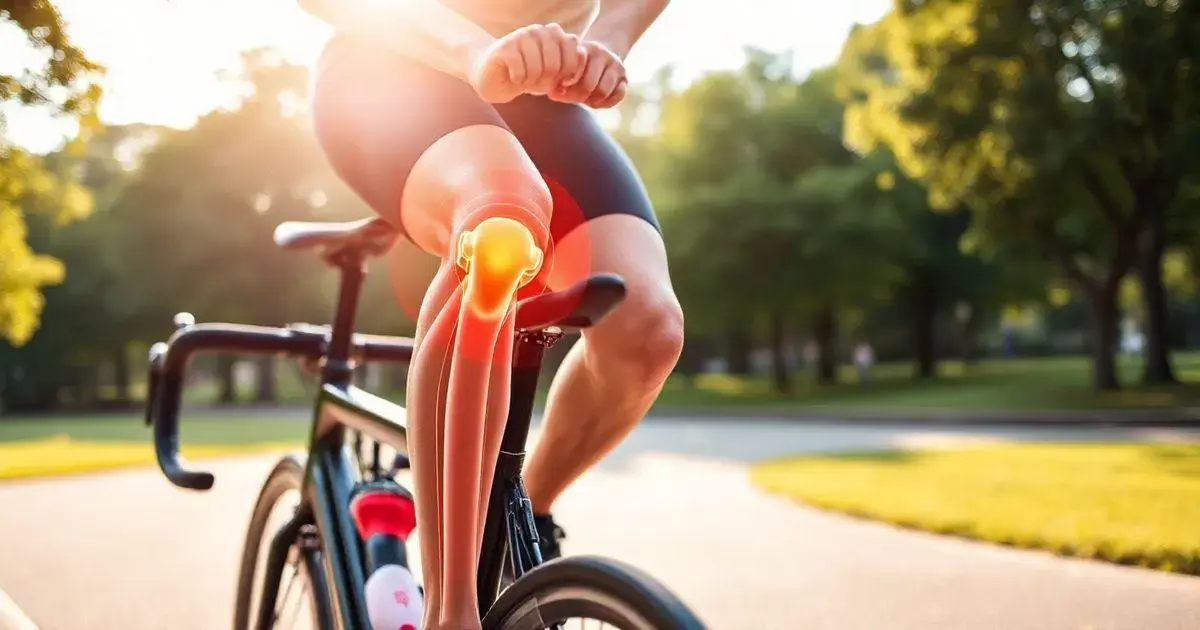Knee Joint Pain: What are the Common Causes?
Do you find yourself wincing with knee pain more often than not? Understanding the root causes of knee joint pain can be the key to finding relief and reclaiming your mobility. From overuse injuries to arthritis and more, let’s dive into the common culprits behind this all-too-familiar discomfort.

Understanding Overuse Injuries and Their Impact on Knee Joint Pain
Understanding Overuse Injuries
Overuse injuries in the knee joint result from repetitive stress on the joint, causing tissue damage and inflammation. Common in athletes and individuals with physically demanding jobs, overuse can lead to conditions like patellar tendinitis or runner’s knee. Understanding the causes and symptoms is crucial for effective management.
Impact on Knee Joint Pain
Overuse injuries can contribute significantly to knee joint pain, affecting daily activities and quality of life. Without proper care and treatment, overuse injuries can worsen over time, leading to chronic pain and mobility issues. Managing these injuries promptly is essential to prevent long-term complications.
Step-by-Step Guide:
1. Rest and Ice:
Begin by resting the affected knee to reduce inflammation and pain. Apply ice packs for 15-20 minutes several times a day to alleviate swelling.
2. Compression and Elevation:
Use a compression bandage to support the knee and reduce swelling. Elevate the leg above heart level when resting to promote circulation and decrease inflammation.
3. Gentle Stretching and Strengthening Exercises:
Engage in low-impact stretching and strengthening exercises to improve flexibility and muscle support around the knee joint. Consult a healthcare provider or physical therapist for suitable exercises.
4. Pain Management:
Over-the-counter pain relievers can help manage discomfort. If pain persists, seek medical advice for alternative pain management options.
5. Gradual Return to Activity:
Once symptoms improve, gradually resume activities while avoiding overexertion. Listen to your body and prioritize proper form to prevent re-injury.

Addressing the Role of Muscle Imbalances in Knee Joint Pain
Muscle imbalances play a significant role in causing knee joint pain. When certain muscles around the knee are weaker or tighter than others, it can lead to improper alignment and excessive stress on the knee joint. This imbalance can result from various factors such as poor posture, overuse of certain muscles, or inadequate strength training exercises.
To address muscle imbalances in the knee joint, it is essential to focus on strengthening and stretching exercises that target the specific muscle groups involved. Incorporating exercises that strengthen the quadriceps, hamstrings, and calf muscles can help improve overall knee joint stability and function. Additionally, flexibility exercises such as yoga or Pilates can help release tension in tight muscles and promote better alignment.
Moreover, seeking guidance from a physical therapist or a certified personal trainer can also be beneficial in designing a tailored exercise program to address muscle imbalances effectively. They can assess your muscle strength and flexibility and create a personalized plan to target weak areas and improve overall muscle balance around the knee joint.
By addressing muscle imbalances through targeted exercises and professional guidance, individuals can experience reduced knee joint pain, improved mobility, and better overall joint health.
Proper management of muscle imbalances is crucial for preventing and alleviating knee joint pain. By focusing on strengthening and stretching exercises that target specific muscle groups, individuals can address the root cause of knee discomfort and improve joint function. Incorporating a balanced exercise routine that includes both strength training and flexibility exercises can help promote muscle balance and reduce the risk of injury or strain on the knee joint.
Effective Strategies for Managing and Preventing Knee Joint Inflammation
Knee joint inflammation can be a common source of pain and discomfort for many individuals. Inflammation in the knee joint can result from various factors such as overuse, injury, or underlying conditions like arthritis. To effectively manage and prevent knee joint inflammation, several strategies can be implemented.
One effective strategy for managing knee joint inflammation is to incorporate low-impact exercises such as swimming or cycling into your fitness routine. These activities can help strengthen the muscles around the knee joint without putting excessive stress on the joints, reducing the risk of inflammation.
Another essential aspect of managing knee joint inflammation is maintaining a healthy weight. Excess body weight can put additional pressure on the knee joint, leading to inflammation and pain. By following a balanced diet and engaging in regular physical activity, individuals can manage their weight effectively and reduce the strain on their knees.
It is also important to listen to your body and avoid overexertion during physical activities. Gradually increase the intensity and duration of your workouts to prevent putting undue stress on the knee joint. Additionally, incorporating rest days into your exercise routine can help the joints recover and reduce the risk of inflammation.
Furthermore, using supportive knee braces or orthotic inserts in your footwear can help stabilize the knee joint and reduce inflammation during physical activities. These supportive aids can provide additional support and alignment to the knee, minimizing the risk of strain and inflammation.
The Importance of Proper Footwear in Supporting Knee Joint Health
Proper footwear plays a crucial role in supporting knee joint health and preventing injuries. Ill-fitting or unsupportive shoes can lead to improper alignment of the foot and ankle, causing unnecessary stress on the knee joint. To maintain optimal knee joint health, it is essential to choose footwear that provides adequate support and cushioning.
When selecting shoes for everyday wear or physical activities, look for options that offer good arch support and cushioning. Proper arch support helps distribute weight evenly across the foot, reducing the impact on the knees and lower body. Cushioned soles can also absorb shock during movement, protecting the knee joint from excessive pressure.
Avoid shoes with worn-out soles or inadequate support, as they can contribute to poor alignment and increased stress on the knee joint. Regularly inspect your footwear for signs of wear and tear, and replace them when necessary to ensure optimal support and comfort.
For individuals with specific foot conditions or gait abnormalities, custom orthotic inserts can be beneficial in providing tailored support and alignment to the feet and ankles. These inserts can help correct imbalances in the foot structure and reduce the risk of knee joint pain and injuries.
By investing in proper footwear that offers adequate support and alignment, individuals can promote knee joint health, reduce the risk of injuries, and enhance overall comfort and mobility in daily activities and exercise routines.
Conclusion
Understanding overuse injuries and their impact on knee joint pain is essential for effective prevention and management. These injuries arise from repetitive stress, leading to inflammation and discomfort, often affecting individuals engaged in sports or physically demanding activities. Recognizing the signs early on can help prevent chronic issues and maintain a better quality of life.
Implementing a comprehensive approach to managing knee joint pain involves rest, proper exercise, and addressing muscle imbalances. Incorporating targeted strengthening and stretching routines can significantly enhance knee stability, while also reducing the risk of future injuries. Consulting with professionals such as physical therapists ensures a tailored plan that promotes optimal recovery and knee health.
Additionally, maintaining a healthy lifestyle, managing body weight, and wearing appropriate footwear play pivotal roles in supporting knee joint health. By being proactive and attentive to the demands placed on your knees, you can not only alleviate pain but also prevent the progression of overuse injuries, allowing for a more active and enjoyable life.
